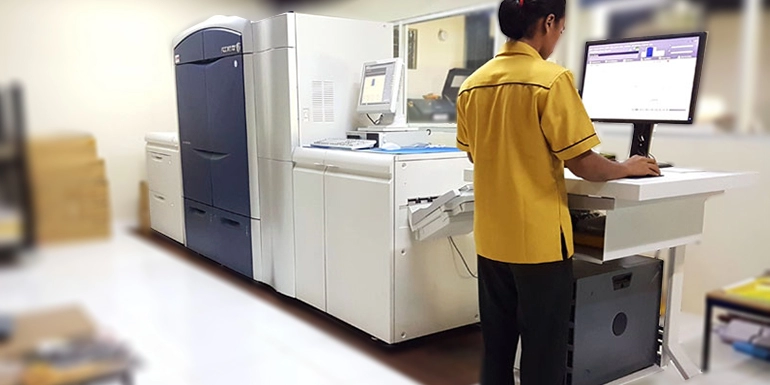
The Human Touch Behind Online Printing
Yet while printing may have replaced monks with their quills, it hasn’t done away with people altogether. Quite the contrary! No printing process can happen without human involvement. The jobs have become less physical (and less hazardous) – nobody has to carve lithographs out of stones or set ink-stained sorts into type cases anymore – but even the most technologically advanced, computer-controlled printing presses still need experienced print professionals to run them.
The essence of printing is that it is a mechanical process. By printing text or images instead of reproducing them by hand, humans eliminate the potential for copying errors and can multiply the number of copies produced almost exponentially. That’s why Gutenberg invented the printing press, and why it changed the world: the spread of ideas, the ability to literally all be on the same page, is what made modern science, literature, and philosophy what they are. In order for humans to share and develop their ideas, they needed machines to copy and distribute them.
A real Print Professional
Bali Print Shop is an Online printing of the kind we offer requires experience and creativity, and we are committed to helping find and develop people with the potential to become tomorrow’s print professionals. That’s why we offer three-year training positions for school-leavers in print and media technologies (PMT for short); at the end of these apprenticeships, trainees are ready to work as print professionals – and many do just that by taking on a permanent position at Bali Print Shop It’s what you might call a win-win situation.
Our two courses are PMT Printing (Printing Machine Minder) and PMT Print Processing (Binding and Finishing Machine Operator). The latter allows trainees to specialist in working with printed products coming out of the press: print processing is what turns flat sheets of paper into brochures, flyers, posters, books, and many other things, too. It can involve everything from checking proofs before the main job, programming computer interfaces, to stapling sheets of paper together.
The printing course, meanwhile, is for people who want to work with the actual presses: at the end of this course, trainees can configure print presses, manage print runs, and maintain the mechanical components of the presses they work with. What is more, they have the opportunity to specialist in various printing techniques, from sheet-fed or web-fed off-set through to gravure/intaglio printing and newspaper production.
